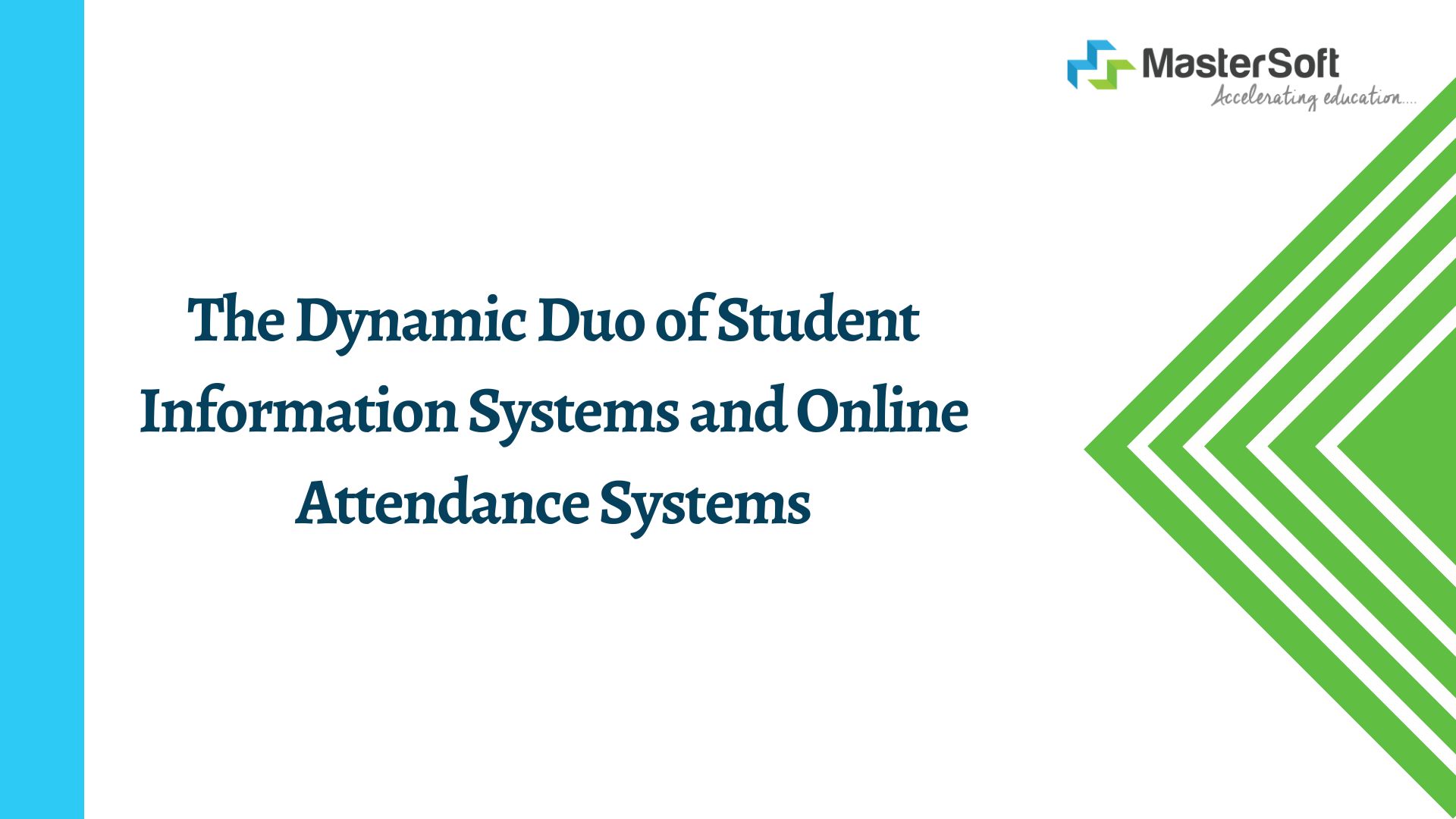
Revolutionizing Education: The Dynamic Duo of Student Information System and Online Attendance System
In the rapidly evolving realm of education, technological advancements are reshaping conventional processes, introducing efficiency and innovation. Two pivotal elements at the forefront of this transformation are Student Information Systems (SIS) and Online Attendance Systems. This blog explores the synergistic relationship between these systems, unraveling how their integration is reshaping the educational landscape.
- Demystifying the Student Information System (SIS): A Comprehensive Educational Hub
Understanding the Core Components:
At the heart of educational management, Student Information Systems (SIS) serve as comprehensive repositories of student-related data. From detailed student profiles and academic records to course schedules and grades, SIS acts as a centralized hub for crucial information.
Streamlining Administrative Tasks:
One of the primary advantages of SIS is its ability to automate administrative tasks. Educational institutions can efficiently manage student data, allocate resources judiciously, and reduce the burden on administrative staff, enhancing overall operational efficiency.
Enhancing Communication:
SIS facilitates improved communication among stakeholders, fostering a more connected educational ecosystem. Teachers, students, and parents can access pertinent information seamlessly, promoting transparency and collaboration.
- The Power of Real-time Data: Online Attendance Systems in Action
Revolutionizing Attendance Tracking:
Traditional attendance methods often fall short in accuracy and real-time monitoring. Online Attendance Systems address these limitations by providing a dynamic and instantaneous approach to attendance tracking. This not only reduces manual efforts but also enhances the accuracy of attendance records.
Biometric Integration:
To combat issues like proxy attendance, Online Attendance Systems often incorporate biometric technology. Utilizing fingerprint or facial recognition, these systems ensure secure and precise identification, minimizing the risk of fraudulent attendance practices.
Notifications and Alerts:
Online Attendance Systems contribute to proactive communication by automatically notifying parents and administrators about student attendance. This feature enables swift intervention in case of irregularities and fosters a collaborative support system for students.
- The Synergy Unveiled: Integrating SIS with Online Attendance Systems
Efficiency Amplified:
The integration of SIS with Online Attendance Systems creates a seamless flow of information. By eliminating silos and reducing manual data entry, this integration enhances overall efficiency, allowing educational institutions to focus on their core mission of facilitating learning.
Data-Driven Decision Making:
The amalgamation of these systems empowers educational institutions to make informed decisions. By analyzing attendance patterns in correlation with academic performance, administrators and educators gain valuable insights, enabling them to implement targeted interventions and support mechanisms.
Student-Centric Approach:
The combined power of SIS and Online Attendance Systems contributes to a student-centric approach. Students benefit from increased accountability, personalized support, and a more enriched learning experience, as these systems work in harmony to create an environment conducive to academic success.
- Future Trends and Innovations: What Lies Ahead
Artificial Intelligence and Predictive Analytics:
The future of these systems involves the incorporation of artificial intelligence (AI) and predictive analytics. AI-driven algorithms can analyze historical attendance data to predict trends and identify potential issues before they escalate, further enhancing the proactive nature of these systems.
Mobile Accessibility:
A growing trend in education technology is the emphasis on mobile accessibility. SIS and Online Attendance Systems are adapting to the on-the-go nature of users, providing convenient access through smartphones, fostering a more flexible and user-friendly experience.
Continuous Evolution:
These systems represent a dynamic facet of educational technology, continuously evolving to meet the changing needs of educational institutions. Staying at the forefront of technological innovation, SIS and Online Attendance Systems are set to play a pivotal role in shaping the future of education.
Conclusion:
As educational institutions embrace the digital age, the integration of Student Information Systems with Online Attendance Systems emerges as a transformative force. This dynamic duo streamlines administrative processes, enhances communication, and fosters a student-centric approach, laying the foundation for a more efficient and supportive educational environment. The future holds exciting possibilities as these systems evolve, leveraging emerging technologies to propel education into new realms of efficiency and effectiveness.



